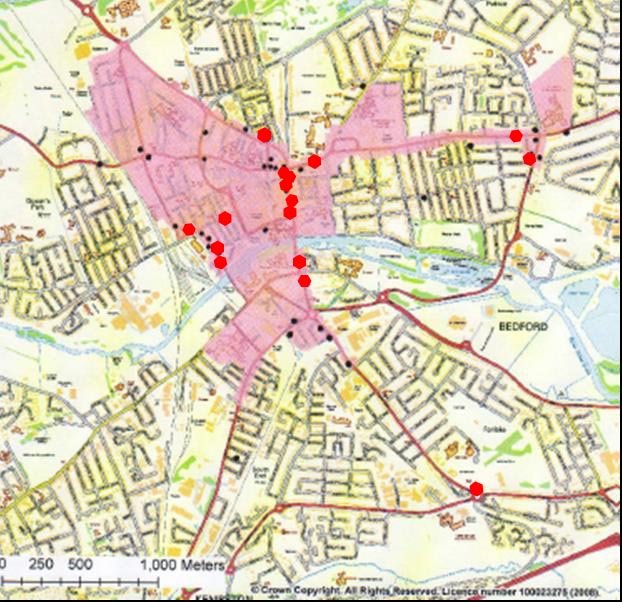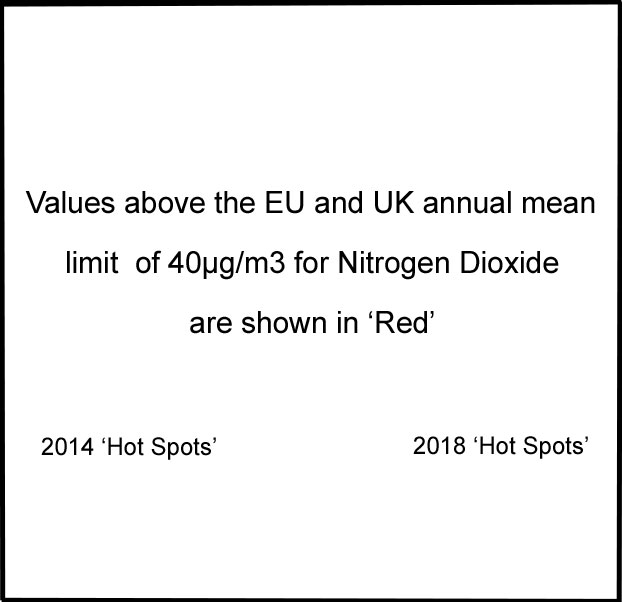Air Pollution
Air pollution today is a major environmental risk to health. It is invisible, can't be smelt or tasted but causes at least 40,000 premature deaths a year in the UK. Unlike the smogs of the 1940/50s created by smoke from coal burning power stations and fires the current main culprits are the emissions of particulates (PM2.5) and nitrous oxides chiefly from the 40% highly polluting diesel engined motor vehicles on our roads today.
The emissions are linked to the burden of disease from strokes, heart disease, lung cancer, and both chronic and acute respiratory diseases, including asthma. The lower the levels of air pollution, the better will be the cardiovascular and respiratory health of the population and in particular for the most vulnerable in society; children and older people.
Under the Environment Act of 1995 local authorities are required to review air quality in their area and in places where air quality limits are exceeded, they have to designate Air Quality Management Areas (AQMAs) and work towards certain air quality objectives. An air quality action plan, describing the pollution reduction measures, must then be put in place.
Bedford Borough issued AQMAs for Prebend Street (AQMA2) and High Street (AQMA3) in June 2005 but had to revoke both of them in November 2009 and issue a new one (AQMA5) for the whole of the town centre area due to the presence of high levels of nitrogen dioxide resulting from heavy levels of through traffic.
It has two continuous monitors* at two locations, High Street and Prebend Street, and 59 sites monitoring annual means, an increase of 5 in 2019. Over the last few years air quality has improved from a peak of 63% of values exceeding the national target of 40µg/m³ in 2012 to 7% (4 locations - 2 in or adjacent to the High Street and 2 in or adjacent to Prebend Street) in 2019. If 35µg/m³ is taken as the baseline, 10% below the target, there are still 16 locations, 13 in the central area.
An analysis of the data from all sites in and around the town centre between 2009 and 2019 shows that from 2015 to 2019 the level of emissions have on average been flat .



The High Street and Prebend Street areas continue to be worst areas for pollution .
It is therefore imperative that as much traffic as possible is removed from the central area not only for health reasons but to revitalise the economy of the town centre. The solution however is not just for Bedford Borough Council. It is the responsibility of all individuals to seriously consider changing their mode of transport for short journeys to cycling, walking or public transport.
An exercise in 2014 by the Healthy Air Campaign, King's College London and Camden Council used members of the public to track exposure to air pollution in London. The monitoring found that that travelling on foot or by bike exposed commuters to significantly fewer fumes than using a car or bus.
Look also at Air Quality inluding Review and Assessment Reports on the Bedford Borough Council's website.
Bedford monitor realtime data: High Street/Lurke Street and Prebend Street.
Other references: Causes of air pollution
DEFRA.
Cycling UK (formerly CTC) Briefing Paper 1E (August 2017) on the topic contains a comprehensive list of references.
Back to Campaigning
